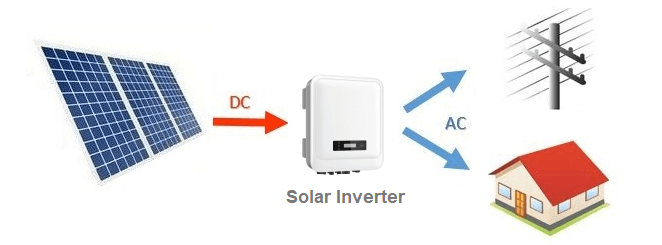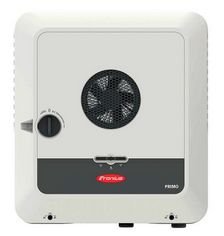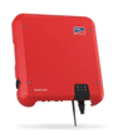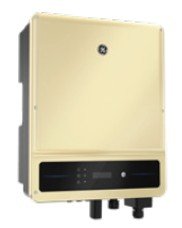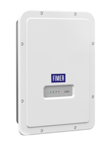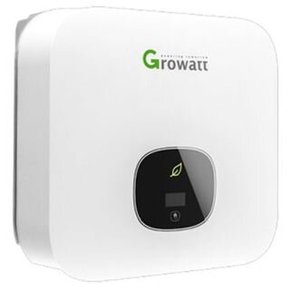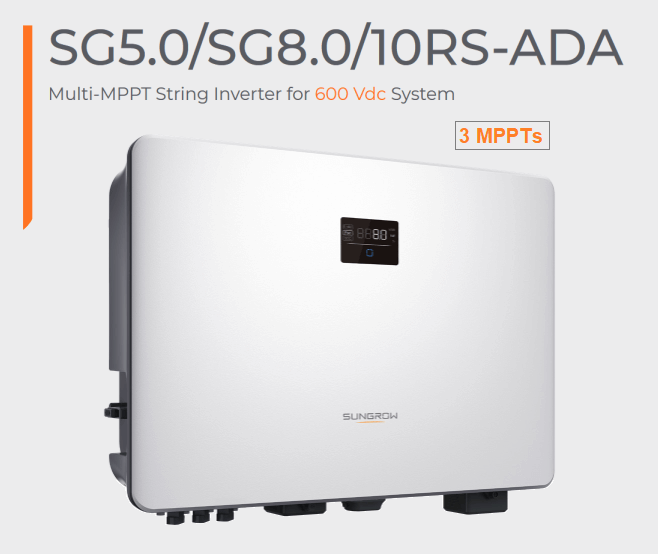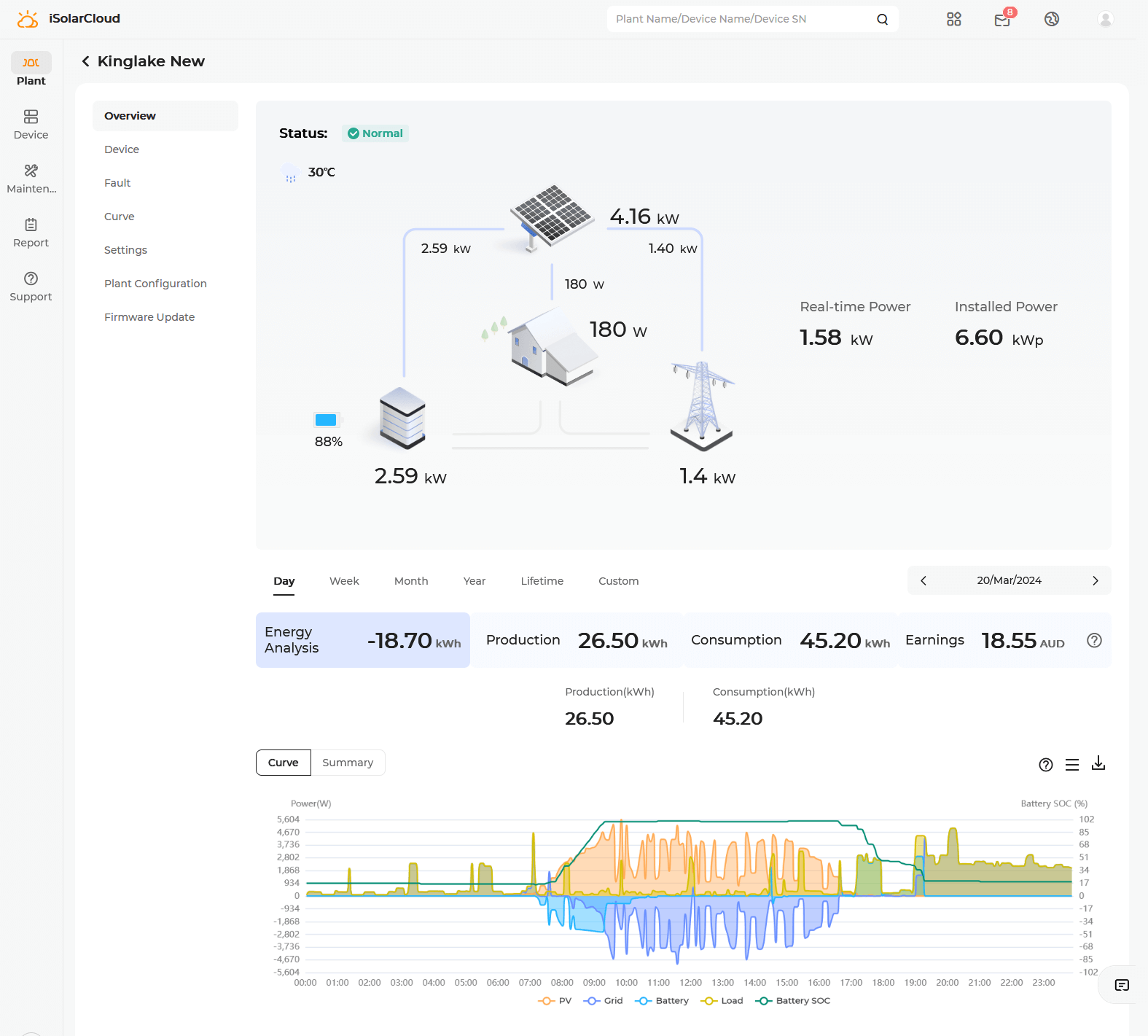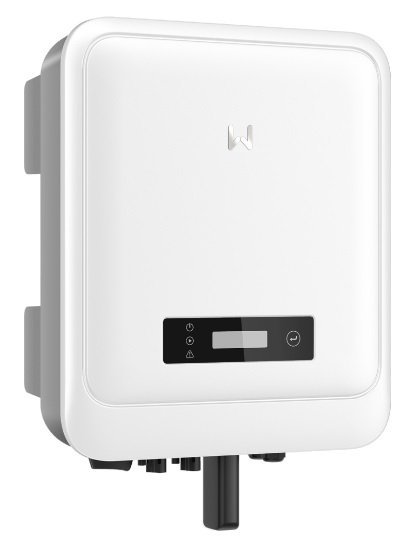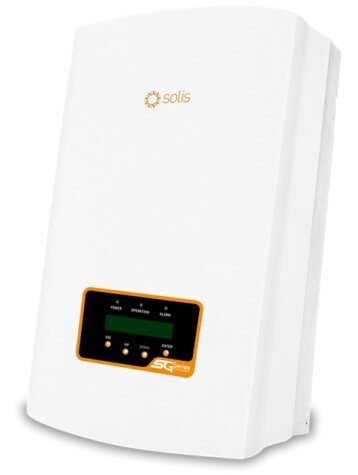Best Solar Inverters 2024
First, let's clarify the role of an inverter. Solar panels generate DC power, while household appliances operate on AC power, as supplied by the electricity grid. The primary role of a solar inverter is to convert DC solar power to AC power. The solar inverter is one of the most important parts of a solar system and is often overlooked by those looking to buy solar energy. This review highlights the best inverters from the world's leading manufacturers to ensure your solar system operates trouble-free for many years.
How a solar inverter works: DC power from solar panels is converted to AC power by the solar inverter, which can be used by home appliances or fed into the electricity grid.
Types of Solar Inverters
While solar inverters are the most common type of inverter used for residential solar, they are just one of several inverter options available for solar and energy storage systems. Below, we describe the four main inverter types used for on-grid and off-grid solar systems. Learn more about the different types of solar systems and how they work.
String Solar Inverters
This review focuses on common 'string' solar inverters, the most popular type. These inverters use one or more strings (groups) of solar panels connected in series. String solar inverters are the most common type used in the UK, Europe, Australia, and Asia. They are also growing in popularity in the US, where microinverters are extremely popular.
Hybrid Inverters
Hybrid inverters, sometimes called battery-ready inverters, are similar to string solar inverters but enable the direct connection of a battery storage system to allow greater self-sufficiency using solar. Most hybrid inverters also provide basic backup power in the event of a blackout but are generally not designed for continuous off-grid use. While more expensive, hybrid inverters are becoming more cost-competitive against solar inverters as hybrid inverter technology advances and batteries become cheaper and more appealing. For more information, see our best hybrid inverters review.
Off-grid Inverters
Off-grid power systems generally require much more powerful battery inverters with built-in chargers, which can be set up as either AC or DC-coupled solar systems. Modern, off-grid inverters, or multi-mode inverters, can also be used to build advanced hybrid grid-connected energy storage systems. Many off-grid systems also use MPPT solar charge controllers, which are connected between the solar panels and battery to regulate the charging process and ensure the battery is not over-charged.
Microinverters
Microinverters, or micros, are very small solar inverters attached directly to individual solar panels. Since each microinverter and panel operate independently, they are an excellent option for complex roof layouts and locations with shading. Despite the slightly higher cost, micros are becoming more popular worldwide due to several advantages over string solar inverters. While this review focuses on common string solar inverters, we would rank microinverters, such as those from Enphase, in the top 3 solar inverters and are highly recommended.
Top 10 Solar Inverters 2024
* Extended warranty options may vary depending on the country or region.
^ SolarEdge price range excludes the required panel-mounted power optimisers.
See Our Detailed Inverter Comparison Charts
Inverter Rating Criteria
The following criteria were used to determine the best solar string inverters currently available, together with continuous feedback from solar installers and our industry specialists in Australia and North America. This comparison primarily focuses on common grid-tie solar inverters (single-phase), but we also note some manufacturers’ hybrid inverter models as battery technology becomes increasingly popular. While we endeavour to include as many models as possible, some newer brands or lesser-known manufacturers may not be included due to limited installer feedback, real-world performance and reliability data or manufacturer’s exposure.
Quality & Reliability
Service & Support
Monitoring
Warranty
Features
Price
Inverter Price Range
There is a considerable price difference between the hundreds of solar inverters available. For example, an entry-level 5kW inverter can start at as little as $650, while a premium quality 10kW inverter with a 10-year warranty may cost up to $2800. However, considering the higher failure rates of many low-cost inverters and the difficulty of claiming warranties, we recommended investing in a higher-quality unit. As a common saying in the solar industry goes, “the cheapest products will cost you more in the long run”. It’s worth noting that hybrid inverters used for battery storage generally cost 25 to 50% more than the equivalent size solar inverter due to the additional battery controls and energy monitoring.
Where should an inverter be located?
Almost all solar inverters are fully weather-rated and can be safely installed outside. However, like any electrical equipment, solar inverters should be installed in a protected or shaded location to avoid extreme weather and large variations in temperature, which can reduce performance and lifespan. The life of a solar inverter will be significantly increased by locating it inside a garage, under a carport and out of direct sunlight. Most importantly, locations exposed to the hot afternoon sun should always be avoided. If direct sunlight cannot be avoided, a protective sun cover will help prolong the life of the inverter.
Solar panels can also develop problems or suffer from excessive degradation over time, resulting in poor performance. However, unlike a faulty inverter, degradation of solar panels will generally not result in a complete system shutdown; that being said, we recommend using only reputable solar panel brands from a reliable installer. With this in mind, it is worthwhile to pay the additional cost for a quality inverter brand that has been in good business standing for at least five years.
Solar Inverter function & problems
The solar inverter is the most sophisticated part of any grid-tie solar system, and unfortunately, it's also the part most likely to have issues. This is not surprising considering inverters are usually located outside in harsh weather conditions, including rain, humidity and extreme heat, all while generating thousands of watts of power for up to 10 hours a day. This is why it's important to use a quality inverter and mount it in a sheltered location if possible. Learn more about solar system fault finding.
Inverter Warranty and Service
Most solar inverters come with either a full 10-year warranty or a 5-year full warranty plus a 5-year parts warranty. Fronius, Sungrow and SMA have ranked on top of the list for many years due to their low failure rates and great service, as they usually ship replacement units in 3-5 business days. Fimer, Goodwe, Fimer and Huawei all come with 10-year warranties as standard, while SolarEdge and Sunways offer a 12-year manufacturer’s warranty. Most brands also offer a 10-year warranty, but some will only repair a faulty unit if it is shipped to them (at the owner's cost) and returned, which can take weeks and sometimes months. This will have a much greater financial impact due to system downtime.
Best Solar Inverters - Detailed Review
Below, we examine the best residential solar inverters for 2024 based on quality, features, monitoring, warranty, service, and feedback from solar installers and industry professionals. Additionally, the runners-up section below describes several other popular inverter brands highly regarded by many customers and professional solar installers.
1. Fronius GEN24
The next-gen Fronius GEN 24 inverters.
Fronius Inverters have maintained the top spot for much of the last eight years, ever since the release of the innovative snap-in design in 2012. These Austrian-manufactured inverters have become the inverter of choice for many domestic and commercial solar installations due to their proven performance and reliability, plus the excellent service from the Fronius support team. However, the high demand for the popular single-phase Fronius Primo inverters used for residential installations has resulted in some supply issues, and some minor faults have been reported. Still, overall feedback is very positive, and any problems have been promptly corrected. The base warranty is five years, and an additional five-year extended warranty is available when the inverter is registered online, which gives a full 10-year warranty. See our detailed Fronius Solar Inverter Review.
Quality & Reliability - 9/10
Service & Support - 8/10
Monitoring - 7.5/10
Warranty - 8/10
Features - 9/10
One of the reasons for Fronius’s reliability and performance is due to the ‘active cooling’ system incorporated into all Fronius inverters. Active cooling is also a key design feature in the new generation Fronius GEN24 series. The fan-forced cooling system extracts heat at a higher rate, which reduces thermal stress and can increase power output in high ambient temperatures. All power electronics have a maximum operating temperature, after which the power needs to be reduced to prevent overheating and potential damage.
Fronius SolarWeb - online monitoring portal enables full site generation and consumption monitoring with the Fronius Smart Meter installed.
Wi-Fi monitoring comes standard with all inverters via the Fronius Solarweb. The addition of the Fronius Smart meter enables monitoring of energy generation and consumption and can be used as a complete home energy monitoring system. The Fronius Solarweb app is an easy-to-use app that displays solar generation, consumption and estimated savings. The analysis section offers detailed operating statistics like string current and grid voltage. However, only three days of consumption monitoring data can be accessed without a premium subscription to the Fronius Solarweb.
2. SolarEdge Home Hub
SolarEdge Home Hub solar inverter
SolarEdge inverters have become increasingly popular in Australia, the USA and around the world over the last few years due to the unique design using DC optimisers that enable individual solar panel level power optimisation and control. See our detailed SolarEdge Review.
The compact SolarEdge Home Hub inverters are available in a wide range of sizes from 3kW to 10kW. All Solaredge inverters must be installed with an additional DC optimiser fitted to each panel. The optimisers add to the cost and perform part of the job of a typical string inverter but have several benefits, including panel-level monitoring and power optimisation.
Quality & Reliability - 8/10
Service & Support - 7.5/10
Monitoring - 8.5/10
Warranty - 9/10
Features - 8/10
Solaredge DC Optimisers are small electronic modules attached to the rear side of each solar panel, enabling each panel to operate at its maximum power level. Note that panel-level optimisation is not unique to SolarEdge; similar benefits can be obtained through microinverters and add-on power optimisers such as those from Tigo Energy.
SolarEdge has one of the best smartphone apps for remote system monitoring. The MySolarEdge App is a free cloud-based system monitoring portal that provides solar generation and consumption monitoring (with an additional energy meter). It also provides detailed panel-level monitoring (once enabled), along with a suite of smart home control features that can be used to control home appliances and specified loads with the additional SolarEdge smart energy products, including the SolarEdge EV charger.
The MySolarEdge App is a great, easy-to-use for full system solar monitoring and home automation
3. Sungrow SG Series
The new Sungrow SG series solar inverter
Founded in 1997 by a university professor, Sungrow is one of the largest suppliers of solar inverters globally and a leading Chinese inverter manufacturer. The residential SG range became very popular due to the competitive price, great reliability, and good reputation for service and quality. The excellent support from the Sydney-based office in Australia has further helped improve their reputation.
See our detailed Sungrow Solar Inverters review.
The previous SG series inverters and SH5K-30 hybrid have received excellent feedback, are great value for money, and are backed by an extended 10-year warranty. The new SG-RS series string inverters are based on the same next-generation inverter architecture as the SH-RS hybrid and feature a smart PID recovery function that reduces or eliminates the problem of potential induced degradation (PID) in solar panels, plus an IV curve scan to help identify any solar panels faults. The ADA version also features 3 x MPPTs, enabling it to utilise three independent strings of panels on different orientations, making it perfect for more complex rooftops or partially shaded areas.
Quality & Reliability - 8/10
Service & Support - 8/10
Monitoring - 9/10
Warranty - 8/10
Features - 8/10
Sungrow inverters include Wi-Fi monitoring as standard on all models and use the new cloud-based monitoring portal iSolarCloud, which is excellent and now features solar forecasting and remote firmware upgrades. The free smartphone App is also very simple and works well.
The new Sungrow IsolarCloud monitoring portal - https://www.isolarcloud.com/
4. SMA Sunny Boy
SMA Sunny Boy AV solar inverter
German manufacturer SMA Solar Technologies was widely regarded as the best string inverter manufacturer before the Fronius snap-in series took the top spot in 2016. However, the new Sunny Boy AV series regained some market share after SMA relocated all manufacturing back to Germany in 2019. SMA inverters have a proven track record for reliability and are generally considered one of the highest-quality inverters available. Local service and support are excellent, and SMA provides an optional 10 to 20-year extended warranty.
See our detailed SMA solar Inverter review.
Like most new inverters, the AV inverter series from SMA does not have a display and relies solely on Wi-Fi communication for setup and monitoring. Display-less inverters have become more common as a digital display in an outdoor environment can fail over time. The display-less design may reduce faults and warranty issues long-term, but only if Wi-Fi communication is reliable and stable.
Quality & Reliability - 9/10
Service & Support - 8/10
Monitoring - 7.5/10
Warranty - 8/10
Features - 8/10
SMA has a free online monitoring package called the Sunny portal, and most SMA inverters now come with Wi-Fi webconnect capability as standard. Full consumption and solar monitoring are achieved using the rather expensive additional Sunny Home Manager 2.0 energy meter. The only major downfall was the older SMA mobile app, which looked very dated and received poor feedback, particularly the Android App version. However, the new SMA Energy App appears to have addressed many of the issues, along with the SMA 360° App, which makes it easier for installers during setup and commissioning.
The new look SMA Energy App is great for users and is much easier for installers during setup & commissioning.
5. Huawei LUNA2000
Huawei fusion solar-hybrid inverter features optimiser and HV battery compatibility.
Chinese communications giant Huawei jumped into the residential solar market in 2018 with a compact, lightweight solar inverter packed with features. Due to the huge volume of commercial & utility-scale inverters sold globally, Huawei is one of the world’s largest solar inverter manufacturers and has invested billions into research and development over the last decade.
See the detailed Huawei inverter and battery review.
The SUN2000L1 inverters also function as a hybrid inverter and are compatible with the SUN2000-450W-P2 optimizers and the Huawei LUNA2000 battery. In some ways, the inverter is similar to the SolarEdge inverter, which uses optimisers for individual panel optimisation, much like microinverters. However, unlike the HD wave, the Huawei inverters can function with or without optimisers. The Huawei inverter is compatible with the Huawei high-voltage modular LUNA2000 battery system. However, an additional backup box is required for backup power during a blackout.
Quality & Reliability - 8/10
Service & Support - 8/10
Monitoring - 8/10
Warranty - 8/10
Features - 8/10
The latest FusionSolar app and online monitoring portal are much better than the previous FusionHome app and offer an easy-to-read interface and many more advanced monitoring and data-logging features. The updated FusionSolar app is also used for inverter setup and direct connection via a local Wi-Fi network.
The latest FusionSolar app is very slick and easy to use for owners and installers.
6. GoodWe DNS-G3 Series
New Goodwe DNS-G3 series solar inverter
GoodWe, established in 2010, is a large, well-known Chinese inverter manufacturer that offers a vast range of cost-effective solar and hybrid inverters. The older DNS series was a very cost-effective inverter with a good MPPT voltage range LCD display, and has had great feedback from installers. The new DNS-G3 series, released in 2023, is built on the same platform but now features a much higher input current rating, wider MPPT operating window, and a very low 50V startup voltage.
See our detailed Goodwe inverter and battery review.
It’s worth mentioning Global electronics giant GE has partnered with Goodwe to produce a range of high-performance solar inverters based on the 5 to 10kW Goodwe MS series inverter platform with up to four independent MPPTs. Plus, a unique 3 to 5kW inverter featuring a high-resolution OLED display.
Quality & Reliability - 8/10
Service & Support - 8/10
Monitoring - 7.5/10
Warranty - 8/10
Features - 7/10
Regarding energy storage, Goodwe offers numerous AC and DC-coupled hybrid inverters and recently launched a range of battery systems. The ES series hybrid inverter is a standout product from Goodwe and is well-regarded in the industry. Many manufacturers incorporate this simple yet powerful hybrid platform into various battery energy storage systems (ESS). All Goodwe inverters include Wi-Fi monitoring as standard. The warranty on the DNS series is ten years, with options to extend up to 25 years. The Goodwe SEMS system monitoring portal is a good, detailed platform for monitoring PV and energy storage systems, although it can be a little difficult to navigate.
The new Goodwe SEMS monitoring platform and app offers a great range of features and detailed data.
7. General Electric GEP series
GE launched a range of residential solar inverters three years ago, developed in collaboration with Goodwe. While GE was already very experienced in utility-scale renewable power systems, it was wise to team up with an established solar inverter manufacturer like Goodwe and introduce some innovative new features, including the high-resolution colour display featured on the unique GEP 3.6-5kW inverter, and up to four MPPTs for larger, more complex roofs on the GEH model. Other features include inbuilt export control and a high MPPT input current rating, better suited for the larger, more powerful panels now on the market. Having been around for several years, GE inverters have had good feedback, and not surprisingly, the quality is on par with most leading manufacturers. Interestingly, some models in the GE range are rated for 200% solar oversizing, which is likely possible on the equivalent Goodwe model as well.
Quality & Reliability - 8/10
Service & Support - 7/10
Monitoring - 7.5/10
Warranty - 8/10
Features - 8/10
The GE range also includes inverters designed for the US market with rapid shutdown features compatible with Tigo and APS module-level add-on devices. There are also several hybrid inverter options similar to the Goodwe range on which they are based. Based on the specifications and datasheets, it’s hard to determine precisely what differs between some of the GE and Goodwe models. However, it will be interesting to see what new GE models are released in the near future, as Goodwe is currently in the process of updating much of its inverter range.
GE uses the same SEMS system monitoring portal developed by Goodwe. The SEMS platform is a simple, easy-to-use interface for monitoring PV and energy storage systems. For those who prefer a display for system monitoring, the high-resolution colour display on the 3.6 to 5kW models is one of the best available.
8. FIMER UNO
The UNO inverter from FIMER (ABB)
FIMER is a well established Italian based inverter manufacturer that took over ABB’s solar division in early 2020. The company is in the process of revamping many of the ABB style inverters and is expanding its range of high-quality string solar inverters for residential, commercial and utility-scale applications.
With the FIMER takeover and positive feedback on the new range of UNO-TL and UNO-TL-DM-PLUS inverters, it’s likely FIMER will maintain and built a strong market position going forward. One of the highlights of the UNO series is the ability to accept parallel strings of panels with a very high 32A MPPT input current rating on of the two MPPTs, meaning it can handle a total of three individual strings of panels at different orientations.
The UNO range of inverters have a common plug & play interface and wifi included in all models. To compete in the growing energy storage market, the second generation REACT 2 hybrid inverters from FIMER are a unique modular battery energy storage system (BESS) that can be either AC or DC-coupled.
Quality & Reliability - 7/10
Service & Support - 8/10
Monitoring - 7/10
Warranty - 8/10
Features - 8/10
The new FIMER Spa App and Energy Viewer monitoring platform is a big improvement and offers more detailed information when used with an energy meter. However, it is still limited and doesn’t provide a lot of technical data, such as individual string generation or voltages, which helps with panel monitoring and troubleshooting. A Wifi logger card (VSN300) can also be installed on all older UNO and TRIO (3-phase) inverters to enable monitoring.
The much improved new look FIMER energy Viewer Spa app
9. Solis
Solis, meaning sun in Spanish, is the common name of well-established Chinese solar inverter manufacturer Ginlong Solis Technologies. Founded in 2005, the company offers a range of string solar inverters designed for on-grid, off-grid and commercial applications. Solis inverters are considered entry-level due to the low price point, however, the popular Residential 5G series inverters offer some notable features including a wide operating (MPPT) voltage range, Certified DC isolator, and integrated export power control using an external CT.
Quality & Reliability - 8/10
Service & Support - 7.5/10
Monitoring - 7/10
Warranty - 7/10
Features - 8/10
Solis inverters come standard with a 5-year warranty, with an extended 10-year warranty option available. The company boasts a global service network in the US, Australia, China, India, Mexico, and Europe, although based on our feedback, obtaining prompt tech support can be problematic. The older Ginlong monitoring platform was known to have some issues, although fortunately, the new SolisCloud app platform appears far more intuitive and easy to use, plus it features some clever enhancements to assist in fault finding.
10. Growatt
Growatt entered the solar inverter market back in 2010 and has grown rapidly to become one of the world’s largest inverters manufacturers. Based in Shenzhen, China, Growatt’s first-generation entry-level solar inverters were known to have some quality and reliability issues, but to their credit, the company backed its product by servicing many of the warranty claims. Growatt has since released a vast array of updated inverters which have had very good feedback so far, and now offers a wide range of solar and energy storage inverter solutions for residential and commercial applications. Still focused on the entry-level market segment, many of the new models have been available for a little over two years, so they are yet to prove themselves in the long term. Growatt seems keen to improve its position and has established local support centres in many countries offering good service in case of a failure or warranty claim.
Quality & Reliability - 7/10
Service & Support - 7/10
Monitoring - 7.5/10
Warranty - 7/10
Features - 7/10
The new generation TL-X inverter range is modern looking and available in a range of sizes from 2.5kW to 6.0kW, with dual MPP trackers and a standard 5-year warranty, 10 year warranty options are also available. The monitoring platform, known as ShineServer and ShinePhone (app), is also greatly improved and now offers a good user interface, remote parameter settings, and remote firmware upgrades.
Runners Up
Delta Home Series
Solar installers generally regard Delta as one of the better-quality entry-level inverters. This is not surprising as Delta Group has been a global electronics giant manufacturing power control systems worldwide since 1971. Despite not selling in high volumes, the new Delta Home Series inverters are reliable but have yet to gain much traction against well-established manufacturers.
The H5A-222 Home Series 5kW inverter was a standout product when it was released in 2020, featuring a built-in (certified) DC isolator, an inbuilt energy meter, and an incredibly low PV startup voltage of 35V. This means the inverter has a wide operating voltage window and will start generating very early in the morning before most other inverters have even woken up. However, the low 11A MPPT input current limit on the Home Series has meant that it is becoming obsolete since many new panels are now rated at 13A or more. The company will need to update the inverter to be competitive. Delta has a 5-year product warranty as standard and an Australian office in Melbourne.
Monitoring is via the cloud-based mydeltasolar app. Delta appears to have made some significant improvements to both the user experience and the commissioning process for installers setting up inverters in the new version of the app.
Solax Power
Solax X1 boost solar inverter
Solax Power is a subsidiary of the much larger Suntellite Group in China, which manufactures solar cells, panels and inverters with a strong emphasis on research and development. Solax Power has a strong global presence and a large global support network. While the X1 range of solar inverters is close to half the price of the European rivals, they are quite basic and lack some of the smart features, but you wouldn't expect them to compete on this level; their slogan sums them up nicely: 'simple, reliable, efficient'.
One of the more advanced inverter options from SolaX is the affordable X-hybrid unit, one of the most economical ‘battery ready’ solar inverters available. Solax was one of the first inverter manufacturers to produce large 3-phase hybrid battery inverters for larger residential and commercial applications.
The Solax online monitoring portal V2 is quite impressive. It offers access via smartphone apps or a web interface, battery management features for hybrid systems, and email reporting, although the Wi-Fi dongle is an optional extra.
Commercial Solar Inverters
While this article primarily focuses on the leading residential, single-phase string solar inverters, most manufacturers also produce a range of inverters designed for larger 3-phase residential and commercial applications. String solar inverters up to and above 100kW are also increasingly popular for utility-scale solar farms due to the advantages of string-level monitoring and ease of servicing compared to central inverters. Below is our list of the most popular 3-phase inverters on the Australian market in the 8kW to 30kW and 30kW to 100kW categories.
Best 3-phase solar inverters - 8kW to 30kW
Fronius - Symo and Eco
Sungrow - SG & CX range
SolarEdge - SE 3-phase
Huawei - SUN2000-KTL range
FIMER - PVS-TL range
Best 3-phase solar Inverters - 30kW to 100kW+
Sungrow - CX range
SMA - Sunny Tripower Core Series
Huawei - SUN2000-KTL range
SolarEdge - SE range
FIMER - PVS-TL range
Have your say - Solar professional’s feedback. In addition to continuous feedback from our solar specialists, the clean energy reviews team invite all solar industry professionals and installers to provide your feedback (positive or negative) from experience with any inverters.
Solar Power Questions?
See more discussion on the best solar inverters on our forum, including a thread on the Best Value Solar Inverters.


